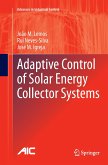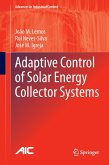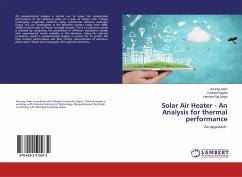The sun produces light with a distribution similar to what would be expected from a 5525 K (5250 °C) black-body, which is approximately the sun's surface temperature. Radiation interacts with matter in several ways: Absorption, Transmission, Scattering, Reflection. When a photon is absorbed, its energy is changed into a different form: electrical or heat. A fraction of the incoming solar radiation is reflected back into space - this is known as the albedo. Direct normal solar radiation is the part of sunlight that comes directly from the sun. This would exclude diffuse radiation, such as that which would go through on a cloudy day. Diffuse sky radiation is solar radiation reaching the Earth's surface after having been scattered from the direct solar beam by molecules or suspensoids in the atmosphere.
Bitte wählen Sie Ihr Anliegen aus.
Rechnungen
Retourenschein anfordern
Bestellstatus
Storno








